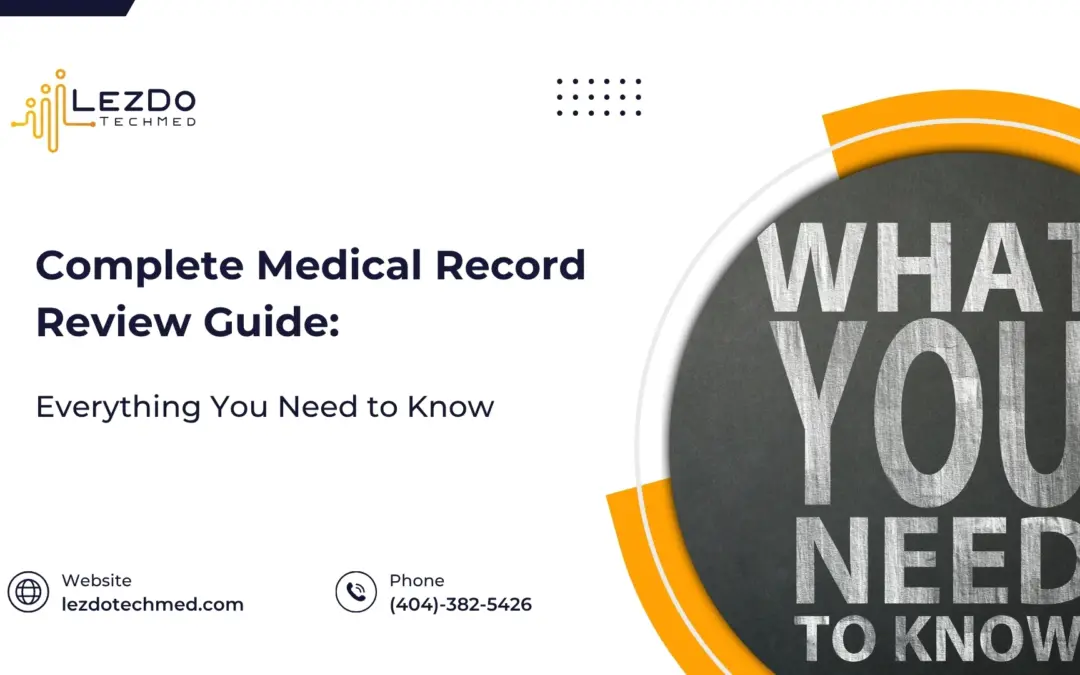Are you a Quality Medical Evaluator (QME) struggling with unorganized medical records? You’re not alone. Dealing with cluttered records can make your job frustrating, time-consuming, and prone to errors. Proper medical record indexing is the only solution that can turn this chaos into clarity.
When medical records are indexed well, you can focus on what matters most: providing accurate, timely assessments that can make a real difference in your practice.
Let’s explore how efficiently indexing medical records can change the way you work for the better of your practice.
How Poor Medical Record Management Affects QME Reports
Unorganized medical records can create a nightmare for QMEs like you. When records are cluttered, essential details can go unnoticed. It may lead to incomplete or inaccurate evaluations. For example, missing a crucial detail or diagnostic report can derail your entire assessment process and final QME reports.
Sifting through unorganized records can cost you valuable time and create errors, making your evaluations inconsistent. The time wasted searching for misplaced or missing files can be frustrating and can also delay deadlines. Sometimes, this may also affect your reputation.
Why is Indexing medical records crucial in QME evaluations?
A well-indexed medical record is like a map that guides you straight to the truth. It provides you with a comprehensive picture of the patient’s medical journey. Medical document indexing helps you focus more on analyzing data, such as specific diagnostic reports, treatment histories, or providers, rather than hunting for it. This can help you identify trends, inconsistencies, or missing details or records without much fuss.
Indexed medical records can improve the overall quality and reliability of your report in negotiations and court trials. They can highly influence your disability evaluations and assessments in personal injury, worker’s compensation, or insurance claims.
Properly managed records not only save your time but also ensure every piece of information is accounted for, making your reports reliable and trustworthy. Indexing transforms jumbled documents into a structured, accessible resource.
Key Components of Medical Records to Focus on
When indexing medical records, it’s important to prioritize the most relevant parts of a medical record.
- Patient history, including prior medical conditions, surgeries, and family history.
- Diagnostic reports such as imaging results, lab results, and specific evaluations.
- Treatment records like documentation of medications, procedures, and therapies.
- Physician notes, including observations, recommendations, follow-up instructions, and home exercises.
- Medical and insurance billing data relevant for claims and reimbursements.
Focusing on these details, you can ensure that all data can be easily accessible during evaluations.
Manual vs. Digital Indexing: Which Suits You the Best?
While indexing, the choice between manual and digital methods depends on your practice’s needs. Manual indexing involves sorting & indexing records by hand, which might work well for small volumes. However, as cases become more complex, this method can be time-consuming and prone to human error.
On the other hand, digital indexing uses software tools to automate the process. It offers features like keyword searches, quick navigation, and remote access. If you deal with large or multi-provider cases, digital indexing is undoubtedly the smarter option.
Types of Indexing Medical Records
Types of indexing in records management can be done by different methods, depending on what works best for you. If you prefer a timeline view, you can go for chronological indexing. This method organizes the medical records by date, providing a step-by-step view of the patient’s medical history.
If you like grouping similar types of information, record-type indexing is perfect. It keeps all lab reports, prescriptions, and imaging results together. Facility-wise indexing is apt when dealing with multiple healthcare providers, as it sorts records based on the facility they came from. Choose the one that fits your practice.
Go through these samples to make your preference.
Check Our Technical Report Samples!
Benefits of Indexing Medical Records for QMEs
Indexed medical records streamline the review process and allow you to access critical information in moments rather than hours. By minimizing the risk of errors or missed details, indexed records improve the accuracy and reliability of your evaluations. Indexed records also make your reports more professional and credible, which is vital in legal or insurance cases. Most importantly, it frees up your time to focus on what you do best, to deliver clear and comprehensive assessments.
Best Practices for Effective Medical Record Indexing
Getting your medical records indexed in proper order can make all the difference. Start with clear categories. Group records by treatment types, providers, or dates for easy access. Use simple but consistent labels to avoid confusion. Update your indexed records whenever you get new records to keep them accurate and relevant.
If you are using digital tools, choose HIPAA-compliant software to protect sensitive patient information. Always review the system to ensure that it is user-friendly. A little preparation early can save you hours later and make your evaluations prompt and flawless.
Challenges in Indexing Medical Records and How to Address Them
Indexing medical records is not as easy as you think. One major challenge is dealing with incomplete or missing medical records. It can cause gaps in the patient’s medical history and hinder QME evaluations. Another issue is managing large volumes of medical records, especially when the case spans many years and multiple providers. Moreover, deciphering illegible handwriting and poorly scanned documents can slow down the process and increase the risk of errors.
To handle these challenges, you can better split large cases into manageable sections and use transcription tools or OCR software to improve readability. Partnering with expert medical record review services for QMEs can streamline the process by ensuring that records are complete, organized, and indexed properly. Making use of user-friendly and effective digital tools further simplifies the indexing process.
How LezDo TechMed Simplifies Medical Record Indexing for QMEs
LezDo TechMed makes medical record review for QMEs easier and more efficient with a structured indexing process. When you outsource medical record indexing to us, you ensure accuracy, consistency and timely delivery. Here’s how:
- Our case management platform, CaseDrive enables seamless real-time tracking of case progress. Stay updated on your cases any time, anywhere.
- Our advanced tools automates the indexing of medical records, making it easier to manage large volumes of data quickly and accurately.
- Medical records are categorized based on case types, specialties, and document types, making them easy to retrieve.
- Through keyword-based indexing, quick retrieval of documents becomes easy.
- All indexed records are integrated with case management features, ensuring that everything is organized.
- LezDo TechMed ensures that indexed records are checked for accuracy, maintaining high-quality standards.
- Our cost-effective medical records indexing service ensures precise organization of medical documents with quick turnaround times for your seamless records management.
This approach makes LezDo TechMed’s medical record indexing services efficient, accurate, and scalable, helping QMEs save time, cost, and focus on their evaluations.
Ultimately, indexing medical records is essential to enhance the accuracy and efficiency of QME evaluation reports. Whether done manually or digitally, structured indexing ensures you have the right information at your fingertips and enables you to create precise, well-constructed reports based on facts. When you follow the right indexing methods and practices, you can save time, reduce errors, and improve the overall quality of your QME process. Outsourcing to medical records indexing services relieves you of the headache of sorting and indexing medical records.











